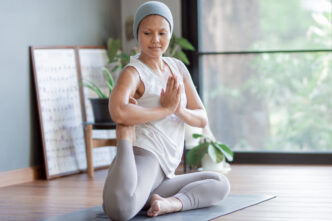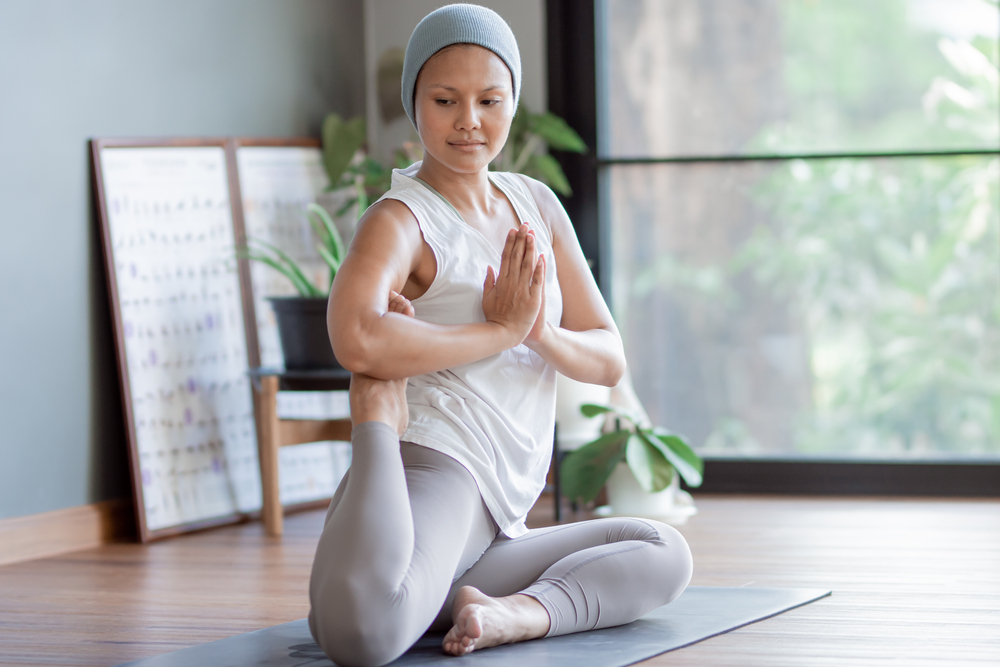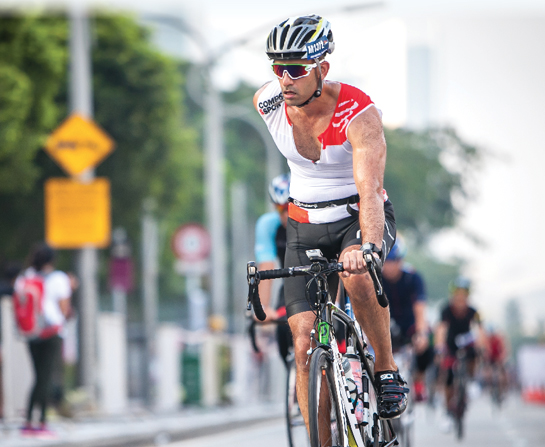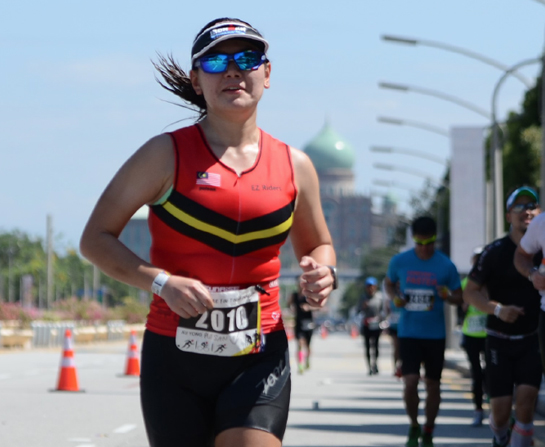Wadie Sumanteri, a dedicated yoga instructor, guides cancer survivors on a journey of healing through yoga. By blending mindful movement with gentle strength-building, Wadie helps individuals reconnect with their bodies, calm their minds, and nurture resilience—showing that yoga can be a powerful ally in recovery and overall well-being.
WORDS WADIE SUMANTERI
 FEATURED EXPERT FEATURED EXPERTWADIE SUMANTERI Certified Yoga Teacher Nadi Tenang Yoga Studio Website |
I was born with scoliosis, a condition in which my spine has a side-to-side S-shaped curve that can be uncomfortable and even painful.
It became worse with the excessive weight I gained after I gave birth to my second child. I experienced pinched nerves, numbness on one side of my body, and difficulties in carrying out my daily routines.
Yoga was a great help in helping me regain the equilibrium in my life. As I have 2 growing-up daughters, yoga lets me be the fit and healthy mother to give them the best TLC they deserve as well as to make many cherished memories with my family.
Today, I have been practicing yoga for more than 10 years, having received my teaching certification in 2016. About 3 years ago, my dream came true when I established Nadi Tenang, a yoga studio, to help foster and support the mental and physical health of the community.
Since 2020, Nadi Tenang offer yoga classes to members of the National Cancer Society Malaysia (NCSM). They join us in physical and virtual sessions every week, and it has been a learning experience— not just for the participants, but also for us instructors!
YOGA FOR CANCER SURVIVORS
Yoga offers a serene path for people that are recovering from their cancer treatments. It can help support the recovery of their bodies and mind as well as the management of existing physical limitations.
In the grand tapestry of yoga, the optimal path varies from one cancer survivor to another. Experience levels, physical constraints and personal comfort are pivotal in charting their journey along their optimal path.
When it comes to reaching out to cancer survivors, Nadi Tenang advocates for direct conversations between teachers and students, to foster a dialogue necessary for choosing the perfect class or practice tailored to everyone’s unique and specific needs.
Hatha Yoga
Traditionally, hatha yoga combines poses and breathing techniques.
Certain studies found that it can help reduce stress and anxiety, improve balance, and support improvements to cardiovascular health, muscle strength, stamina, and fitness.
Tenang Flow
This is Nadi Tenang’s programme that combines restorative and yin yoga.
It incorporates breathwork, relaxation, and body-friendly poses.
IS YOGA SUITABLE FOR EVERY CANCER SURVIVOR?
Yoga is universal to all of us. Hence, cancer patients and survivors as well as their caregivers can practice yoga. However, they must also acknowledge and respect their personal limitations to cultivate a secure and beneficial practice.
Key Considerations to Bear in Mind
- Current treatment stage. Those undergoing active treatment, especially if it involves surgery or intense chemotherapy, should wait for their doctor’s clearance before starting yoga.
- Specific medical conditions. Certain health complications arising from cancer or treatment, like lymphedema or neuropathy, might require modifications or exclusion of certain yoga poses altogether.
- Overall fitness level. Yoga can be adapted for various fitness levels. People that are new to exercising or experiencing significant fatigue can begin with more gentle yoga classes. They may also benefit from private sessions so that the teacher can give them 1-to-1 instructions.
THINKING OF TAKING UP YOGA?
Do These
- Consult your doctor first, especially if you are still undergoing treatment. Get their clearance that it is fine for you to take up yoga.
- Listen to your body. Don’t push yourself. Pay attention to your pain and discomfort and modify your poses accordingly.
- Communicate openly with your teacher. Inform them of your experience level, any limitations you have due to your treatment, and any other existing medical conditions.
- Start gently. If you’re new to yoga or taking up yoga again after treatment, focus on breathwork, relaxation, and gentle movements. Examples are yin yoga or restorative yoga.
- Drink plenty of water. Staying hydrated is important before, during, and after any yoga practice.
The Don’ts
- Don’t push yourself over your limit. Stop a pose if you experience sharp pain. Be mindful of any restrictions due to your treatment.
- Don’t compare yourself to others. Everyone’s body and their yoga journey are unique, so focus on your practice and progress at your own pace.
- Don’t practice yoga in hot or humid environment. This is especially true if you are new to yoga or recovering from a recent treatment. Also, avoid hot or Bikram yoga classes, as they can be too strenuous and dehydrating under these circumstances.
- Don’t hold your breath. Breathwork is a key element of yoga. Focus on smooth, even breaths throughout your practice.
- Don’t be afraid to ask questions or seek clarifications from your teacher on poses or modifications.
| This article is part of our series on tips and advice for leading a healthy lifestyle. |











